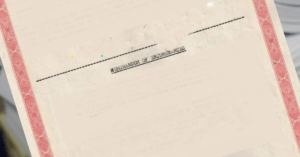How to verify a property title in the Philippines?
Verifying a property title and checking for authenticity, liens, or disputes in the Philippines involves examining the Certificate of Title itself and consulting the official records at the Registry of Deeds.
Here are tips and a discussion on how to perform this verification:
Tips on Checking the Authenticity of a Property Title and Ensuring it’s Free from Liens or Disputes:
- Inspect the Certificate of Title: The Torrens system is designed so that the public can generally rely upon the face of the Torrens certificate of title. The Certificate of Title serves as evidence of ownership. There are two types of certificates: Original Certificate of Title (OCT) for initial registration and Transfer Certificate of Title (TCT) for subsequent transfers. For condominium units, there are Condominium Certificates of Title (CCT).
- Go to the Registry of Deeds (RD): The office of the Register of Deeds constitutes a public repository of records of instruments affecting registered or unregistered lands. Registration is the operative act that conveys or affects registered land and serves as constructive notice to all persons from the time of registering, filing, or entering an instrument.
- Request to see the Original Title: The original copy of the certificate of title is filed in the Registry of Deeds. Upon payment of the prescribed fees, you can obtain certified copies of instruments filed and registered. You can also request references or researches on records or documents on file for a fee.
- Check the Original Title’s Face: Verify the details on the face of the title, such as the registered owner’s name, citizenship, civil status, residence, postal address, and the technical description of the property, against the information provided by the person you are transacting with. If the property is conjugal, it should be in the names of both spouses.
- Examine Annotations/Memoranda on the Back: The back of the certificate of title (or a separate page referenced thereon) contains annotations or memoranda of registered instruments and transactions affecting the property. Checking these annotations is crucial for identifying liens or burdens.
- Identify Potential Liens and Encumbrances: Look for the following annotations, among others:
- Mortgages: Indicates the property is used as security for a debt. A registered mortgage constitutes a lien on the property. It takes effect upon the title from the time of registration. The standard mortgage form references the TCT/OCT/CCT number of the mortgaged property.
- Leases: Indicates a registered lease agreement. Unless recorded, a lease of real estate is not binding upon third persons.
- Adverse Claims: Indicates a claim of interest in the registered land adverse to the registered owner, arising after the date of original registration. The statement setting forth the claim must be in writing, signed, and sworn to. While effective for 30 days, the annotation remains unless cancelled by court order or verified petition; a subsequent sale cannot prevail over a previously annotated adverse claim.
- Notice of Lis Pendens: Indicates that an action is pending in court directly affecting the title to land, its use, or occupation. Annotating a notice of lis pendens serves as constructive notice to the whole world that the property is in litigation, and anyone acquiring an interest does so at their own risk. The notice must contain specifics like the court, date of institution, title number, and description of the land.
- Attachments, Levies, Writs of Execution: Indicates the property is subject to court processes for seizure or sale to satisfy a judgment. These create liens upon registered land.
- Extrajudicial Settlement Annotation: When a deed of extrajudicial settlement is registered, the Register of Deeds annotates a two-year lien on the title as required by the Rules of Court. This lien can be cancelled after the period expires upon presentation of a verified petition stating no claims exist.
- Statutory Liens: Be aware that certain encumbrances may subsist even if not noted on the certificate of title, such as specific liens arising from laws or the Constitution, certain unpaid real estate taxes, public highways or ways, and dispositions under agrarian reform laws like PD 27.
- Check the Primary Entry Book: The Register of Deeds keeps a Primary Entry Book where all instruments filed relating to registered land are entered in the order of their reception. Notations in this book record the date, hour, and minute of reception. Instruments are regarded as registered from the time so noted. Checking this book can reveal if any new transactions, liens, or claims have been presented for registration but have not yet been fully processed or annotated on the certificate of title.
- Be Vigilant Against Fake Titles: The Land Registration Authority (LRA) views with alarm the upsurge of patently fake certificates of title. Patently fake titles are nullities, not registered in the ordinary course, and not issued by the Register of Deeds. Registers of Deeds are directed to be circumspect and exercise vigilance. If a patently fake title is presented for transaction or verification, it should be outrightly confiscated by the Records Officer, and an investigation initiated. However, a Register of Deeds cannot just confiscate a title based on sole judgment if there are doubts about its registrability but it’s not patently fake; the proper procedure is to deny registration and report to the LRA Administrator. The LRA maintains records of decrees and titles and can issue reports regarding their status and existence.
- Exercise Due Diligence Beyond the Title: While the Torrens system allows reliance on the title, exceptions exist. You cannot rely solely on the title if there are facts that would excite suspicion in a reasonably cautious person.
- Check Physical Possession: Inspect the property to see if someone other than the registered owner (the seller) is in actual possession. This is a circumstance that requires further inquiry.
- Scrutinize Transactions: If the person you are dealing with is not the registered owner, or if the transaction involves circumstances that seem unusual or potentially fraudulent, exercise extra caution. Banking and financing institutions, for example, are held to a higher standard of diligence.
- For Subdivision/Condominium Projects: If the property is a lot or unit in a subdivision or condominium project, check the project’s registration and the developer’s license to sell with the Department of Human Settlements and Urban Development (DHSUD), which regulates such projects. Inquire about any complaints against the developer, especially concerning violations of PD 957, such as unapproved mortgages or non-delivery of titles, as these agencies (like HSAC) have jurisdiction over such disputes.
By following these steps and exercising due diligence, particularly by checking the official records and annotations at the Registry of Deeds and physically inspecting the property, you can significantly enhance your understanding of a property title’s authenticity and whether it is burdened by registered liens or involved in documented disputes.




